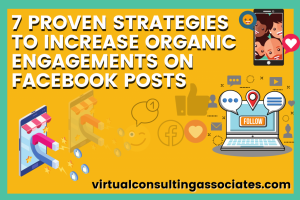The heart of any marketing campaign involves a well-defined target audience. The core of marketing is to deliver the right message to the right people. Marketing your product to the wrong people wastes time, money, and business potential. If you cannot answer the core questions about your target audience you could be using the wrong words, images, and platforms. Simply using keywords that rank high for SEO does not mean that you will be seen by the right people- the ones who will buy your product. As the saying goes, if you target everyone, you’re actually targeting no one. But what does it mean to define your audience?

Customer Demographics
When you determine your target audience you need to know your customer’s demographics. Not just who will use your product, but who will buy it. For example, diamond earrings might be mostly for women, but a large number of men will be purchasing them to give as gifts.
Examples of demographics that could be relevant are the gender, age range, marital status. Also, if they have children and what their children’s age range is, religious preferences, political leanings, economic bracket, education level, occupations, and interests and hobbies. Google Analytics and Facebook Insights can be helpful if you are not sure what your current customer demographics are. You can also engage with customers, sending surveys and posting polls and questions on social media. The goal is to learn what your customers are thinking and what they prefer. This will also help you with the next step, defining your target audience’s needs.

Customer Needs
Once you’ve defined your customer demographics you need to figure out what your customer needs are- what are their motivations for buying your product or using your service? What is the problem that your customer has to which you can provide the solution? Understanding the interests and desires of your customers along with their motivation lets you decide what your ad campaign should look like. Which type of power words should you use? What aspects of your product or service should you emphasize? Utilizing customer surveys and interactions to understand your customers’ motives will help you better leverage existing research models of consumption motives. Once you understand your customer motivations you can make customer profiles.
Customer Profiles
Once you know the demographics and motivations of your target audience make a customer profiles. You should make customer profiles for a representative sampling of your target audience. Customer profiles are also sometimes called personas. When you create a persona you are creating an outline of an imaginary customer that fits within the description of your customer demographics. Your outline describes the gender, age, marital status, income level, likes, dislikes, and problems your product or service can solve for the customer.

For example, if you are selling toy widgets for kids ages 7-10, you may have multiple profiles. One customer profile may be for a mother, who may care more about the price point and educational value of the toy. Another may be a customer profile for a grandparent, who cares more about the popularity of the widget toy, and how entertaining it is for children. As you create your marketing campaign you have to ask how these personas would respond to the words and images you are using. You also want to ask about where the customer would receive your message. You may want to market to your mother on Facebook or Pinterest, but you may market to your grandparent in print ads. If your audience has email, email campaigns can be quite effective with high ROIs.
How To Move Forward
Try to avoid common digital marketing mistakes. Make sure to give yourself a complete digital footprint- do not only stick to a website. And make sure to update regularly. Also, make sure to turn your customers into brand advocates. Have satisfied customers tell their friends and family- give referral discounts. Run campaigns where you ask for testimonials. To encourage participation you can give small freebies or discounts on future purchases for referrals and testimonials.
Once you have defined your target audience, their motivations, and where they can be found, your campaign will become much more effective. You can craft a campaign that truly resonates with your audience- perfectly tailored to meet their needs and desires. This will translate to higher conversion rates and more sales.




